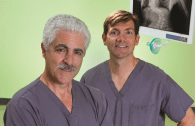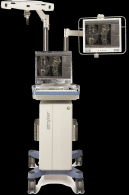The surgical treatment of idiopathic scoliosis is usually reserved for curves that have progressed beyond 40 to 45 degrees. If left untreated, continued progression of these curves may lead to chronic severe pain, deformity, psychosocial disability and pulmonary dysfunction.



Dr. Jeff Neustadt joined Children’s Orthopaedics in September 1991. He actively participates in the Scoliosis Research Society and is currently conducting research projects for scoliosis. He is an active member of the American Academy of Orthopaedic Surgery, the Florida Orthopaedic Society, and the Pediatric Orthopaedic Society of North America.
Dr. Greg Hahn has been with the practice since September 1999. He is an active member of the American Academy of Orthopaedic Surgeons, the Florida Orthopaedic Society, and the Pediatric Orthopaedic Society of North America. He also actively participates in Scoliosis Re-search Society. His special interest is scoliosis.
Drs. Neustadt and Hahn have performed over 1,200 scoliosis surgeries to date. Combined, they have over 30 years experience performing scoliosis surgery. Scoliosis surgeries are per-formed anywhere from 4-6 times per week. For the safety of the patient and the combined expertise of the physicians, all spinal surgeries are performed together by both Drs. Neustadt and Hahn.
